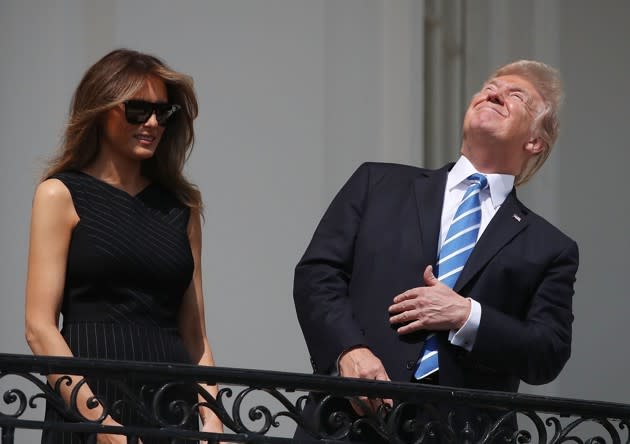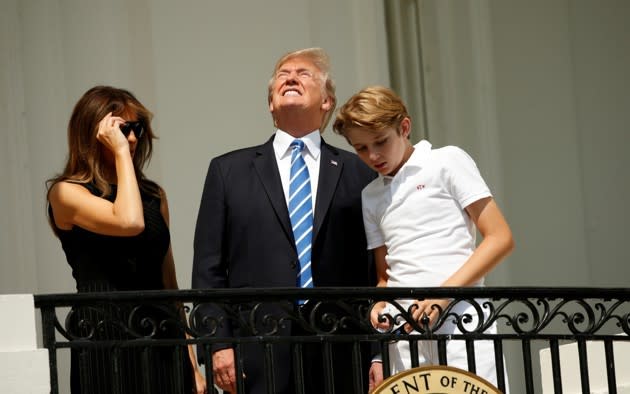The President Who Looked at the Sun
During the solar eclipse today, President Donald Trump stepped onto the White House balcony with his wife and his son Barron, and he looked up at the sun.
According to White House reporters, an aide shouted a warning that he should not look at the sun. Nevertheless, he persisted.
There were parts of the United States, along path of totality, that allowed people to look directly at the eclipse. But Washington, D.C., was not among them.

How much damage can a person do by staring at the sun for a few seconds?
Recommended: The Downsides of Single Payer
As many children are warned, there is indeed no “safe” amount of time to stare directly at the sun. Note that no ophthalmologists recommend any amount of glancing or squinting at the eclipse. Against the energy of the sun, human eyelids are like a dam built of tissue paper.

Most sun-related visual injury is gradual and cumulative over the course of years, leading to cataracts and macular degeneration. But acute overdoses can cause a different sort of irreversible damage to the retina, the dense focus of nerves at the back of the eye, after even a few seconds. Most such solar, or photic, retinopathy is temporary, manifesting as spots in the visual field—like after a camera flashes in your eyes. Though in the case of solar damage, deficits in the visual field can last weeks, even months.
Trump did later put on eclipse viewing-glasses. But if the president suffered serious retinal damage, that would be an unwelcome addition to a growing list of setbacks for the administration.
Read more from The Atlantic:
This article was originally published on The Atlantic.
